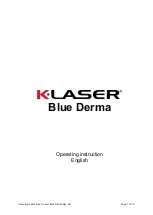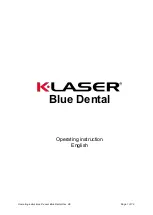
12
and scattering of laser beams must be removed (misplaced windows,
furniture or objects with polished faces).
The paintings (walls, partitions, ceilings ...) and flooring should preferably
be matt. The diffuse reflections of class 4 lasers, focused beams of lasers
of class 3 to visible or near infrared light should be considered dangerous
and treated as such.
When using powerful lasers (Classes 3 to focused beam or 4), eliminate
the beam potential impact on flammable materials (wood, paper, fabric
or plastic) that can be in from fire in power densities of the order of
several W.cm-2 applied for a few seconds.
The access to the laser emission zones should be reported using the signs
in accordance with the Ministerial Decree of 4 November 1993 "Signs of
safety and health in the workplace" and the NF X 08-003 "Symbols
graphics and symbols - colors and safety signs "of December 1994. This
signaling is completed by the words of the class of laser product and the
instructions provided in the NF EN 60825-1 standard. Such access can be
controlled, at least when lasers are operating.
Emissions control: the control panel should be placed outside the
locations exposed to hazardous emissions. The control of lasers in Classes
3 and 4 should be under the control of a key control, removed when the
device is not in use and owned by a qualified person.
Disclaimer: The use of this device is exclusively for professional activities
show and display.
It is forbidden to allow projecting the beams to the audience and any
areas accessible by persons without appropriate eye and skin protective
items. It is forbidden to use this device for any other purpose than that
for which it is intended.
It is forbidden to shine any laser beam to the aircrafts.
If the laser is operated in a situation where health or property injury may
occur, operation MUST be stopped immediately!
Manufacturer and distributors are not responsible for any damages
caused by use of Mac Mah lasers. User is responsible for applying
conditions of use according to regulations stipulated in EN60825-1:2014
and all locally applicable safety laws and regulations.








































